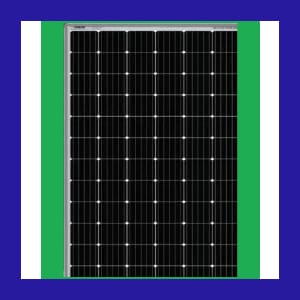Solar panels needed for 8kw solar system
Let’s discuss in detail regarding how many solar panels needed for 8 kW solar system.
1. Determine Solar Panel Specifications
When designing a solar energy system, the first step is to understand the specifications of the solar panels available in the market. Solar panels convert sunlight into electricity, and their efficiency is measured in watts. Most residential solar panels range from 250 to 400 watts per panel. For this outline, we will focus on using 350-watt panels, a common choice for residential installations.
The wattage of a panel directly affects how many panels are needed to achieve a desired system size. In our case, we aim for an 8 kW (8,000 watts) solar system. Using the 350-watt panel, the calculation is straightforward: divide the total system size by the panel wattage. This gives us an initial estimate of the number of panels required.
Additionally, it’s essential to consider other factors such as the physical dimensions of the panels, their efficiency ratings, and warranty periods. Solar panels are generally measured in terms of efficiency, which indicates how much sunlight they can convert into usable electricity. Higher efficiency panels may generate more power in a smaller area, which can be particularly beneficial if roof space is limited.
Beyond efficiency, the durability and warranty of the panels are crucial. Most reputable manufacturers offer warranties ranging from 25 years, reflecting the expected lifespan of the product. Understanding the technical specifications, such as temperature coefficient and performance under various weather conditions, will help in selecting the best panels for your specific location and needs.
2. Calculate the Number of Panels
Once you have determined the specifications of the solar panels, the next step is to calculate the exact number of panels needed for your 8 kW system. This involves a simple mathematical calculation, but it’s essential to account for several variables, including potential system losses.
To begin, divide the total desired system size (8,000 watts) by the wattage of the chosen panels (350 watts). This calculation yields approximately 23 panels (8,000 / 350 ≈ 22.86). However, this figure does not account for inefficiencies in the system.
In practical scenarios, solar systems typically experience energy losses due to various factors such as shading, inverter efficiency, and temperature variations. These losses can range from 15% to 20%. To account for these, we can adjust the system size to ensure it meets the energy needs despite these losses. For example, if we anticipate a 20% loss, we would calculate the required system size as 8,000 watts / 0.8, resulting in 10,000 watts. Repeating the earlier division with this new figure gives us approximately 29 panels (10,000 / 350 ≈ 28.57).
This revised calculation ensures that the system will provide adequate power output throughout the year, even under less-than-ideal conditions. Understanding this process is critical, as it not only determines the number of panels needed but also impacts the overall cost and efficiency of the solar installation.
3. Consider Efficiency and Losses
Efficiency plays a significant role in the overall performance of a solar power system. Solar panels are not 100% efficient; they typically convert 15% to 22% of the sunlight they receive into electricity. Various factors affect this efficiency, including the angle of installation, shading from trees or buildings, and the quality of the panels themselves. Understanding and optimizing these factors can lead to significant improvements in energy production.
In addition to panel efficiency, the inverter, which converts DC electricity generated by the panels into usable AC electricity, also affects overall system performance. Inverters have their own efficiency ratings, typically ranging from 90% to 98%. When designing a system, it’s essential to select an inverter that matches or slightly exceeds the total wattage of the solar panels to ensure optimal performance without overloading.
Moreover, seasonal changes and geographical location can impact the amount of sunlight received, which varies throughout the year. For instance, areas with long winters or frequent cloud cover may experience greater energy losses. Thus, it’s crucial to incorporate these regional characteristics into your system design.
Accounting for potential losses in energy production is vital when sizing a solar system. By planning for a 20% loss, as mentioned earlier, you ensure that the system will still meet your energy demands even under less-than-ideal conditions. This proactive approach helps avoid future shortfalls in energy generation, allowing homeowners to rely on their solar systems for consistent energy needs.
4. Space Requirements
Once you have calculated the number of solar panels required for your 8 kW system, the next important consideration is the space required for installation. Solar panels occupy physical space, and understanding the area needed is essential for effective planning.
Most residential solar panels have standard dimensions of approximately 65 inches by 39 inches, which is about 17.6 square feet per panel. To estimate the total area required for an entire system, you can multiply the number of panels by the area each one occupies. For instance, if you need 29 panels, the total area required would be about 510 square feet (29 panels x 17.6 square feet per panel).
It’s important to evaluate the available installation space, whether on a roof, ground mount, or another surface. For roof installations, factors such as the roof’s orientation, angle, and structural integrity should be assessed. South-facing roofs generally capture the most sunlight in the northern hemisphere, maximizing energy production. If roof space is limited, you may need to consider alternative mounting options, such as ground mounts or solar canopies.
Additionally, local zoning regulations and building codes may dictate certain restrictions regarding installation. Some areas have specific requirements for setbacks, heights, and even aesthetics, which could impact how many panels can be installed.
Ultimately, having a clear understanding of space requirements will guide you in making informed decisions about your solar system’s design and installation, ensuring that it meets both energy and spatial constraints effectively.
5. Inverter Selection
Selecting the right inverter is a crucial step in the design of a solar energy system. The inverter is the heart of the solar power setup, converting the DC electricity generated by the solar panels into AC electricity, which is used by most household appliances. Choosing an appropriate inverter involves understanding different types and their specifications.
There are several types of inverters available, including string inverters, microinverters, and power optimizers. String inverters are the most common type for residential installations, connecting multiple panels in series. They are generally cost-effective but can suffer from performance issues if one panel is shaded or malfunctioning.
Microinverters, on the other hand, are installed on each individual panel, allowing for optimized performance regardless of shading or panel orientation. This can lead to higher energy production, especially in areas with varying sunlight exposure. However, microinverters tend to have a higher upfront cost compared to string inverters.
Power optimizers combine the benefits of both string inverters and microinverters. They maximize the energy output from each panel while still allowing for a central inverter, providing a good balance between cost and efficiency.
When selecting an inverter, it is essential to ensure it has a sufficient capacity to handle the total wattage of the solar array. In our case, with an 8 kW system, you would want to choose an inverter rated for at least this wattage, ideally with some headroom to accommodate potential future expansions or variations in performance.
Additionally, consider the inverter’s warranty and reliability. Most manufacturers offer warranties ranging from 5 to 12 years, and some higher-end models may have warranties of up to 25 years. Researching the inverter’s performance history, customer reviews, and manufacturer support can guide you in making an informed choice that will enhance the efficiency and longevity of your solar energy system.
6. Installation Considerations
Installing a solar power system involves several critical considerations to ensure optimal performance and compliance with local regulations. The first step is to evaluate the structural integrity of the installation site, whether it be a roof or ground mount. It’s vital to ensure that the structure can support the weight of the solar panels and mounting hardware.
When installing on a roof, consider factors such as roof age, materials, and pitch. If the roof is nearing the end of its lifespan, it may be wise to replace it before installing solar panels to avoid future complications. Additionally, the roof’s angle and orientation will influence the panels’ efficiency. South-facing roofs typically receive the most sunlight, while shaded areas should be avoided if possible.
Ground-mounted systems provide more flexibility regarding installation angle and can be adjusted to optimize sun exposure. However, they require adequate space and may involve more significant upfront costs related to land preparation and permits.
Local building codes and zoning regulations also play a significant role in the installation process. Different municipalities have specific rules regarding the placement, height, and aesthetics of solar panels. It’s crucial to obtain the necessary permits before proceeding with installation to avoid fines or having to remove the system later.
Furthermore, consider the installation timeline and potential disruptions. Working with a qualified solar installer can streamline this process, ensuring that all components are installed correctly and safely. A reputable installer will also provide warranties and support, adding to the overall value of the investment.
Lastly, planning for maintenance and monitoring is essential for maximizing the system’s efficiency. Regular inspections and cleaning of the panels can enhance their performance and extend their lifespan, ensuring that the solar power system continues to meet energy needs over the years.
7. Local Regulations and Incentives
Understanding local regulations and incentives is a crucial aspect of planning a solar power system. Regulations can vary significantly by region and can affect everything from installation methods to permitting and grid interconnection.
First, familiarize yourself with the building codes in your area, which dictate how solar installations should be conducted. This may include specific requirements for mounting systems, electrical connections, and safety measures. Adhering to these regulations is vital not only for compliance but also for ensuring the safety and efficiency of the installation.
In addition


